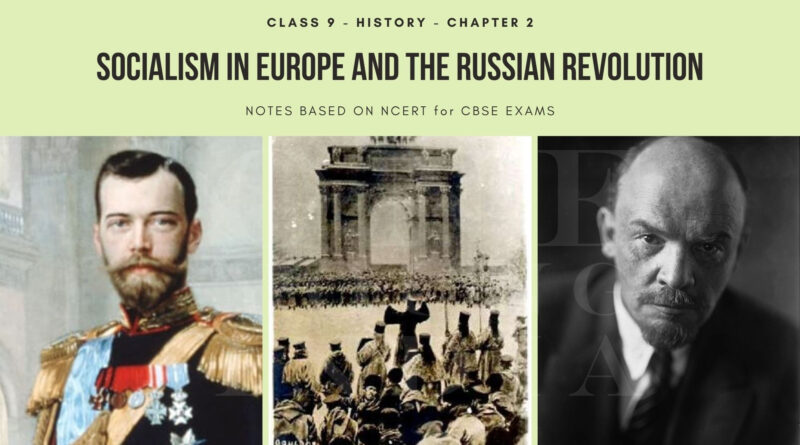Socialism in Europe and the Russian Revolution 2022
Socialism in Europe and the Russian revolution were two important historical events in the 20th century. What is socialism, and how did it develop? What was the Russian society like, and how did it differ from its Western counterparts? This article will give you an understanding of the origins of socialism and how it developed in Russia.
Socialism in Europe and the Russian revolution
Table of Contents
Socialism in Europe and the Russian Revolution were two revolutionary movements which developed in the same period. In the 1870s, socialist ideas spread throughout Europe and formed the Second International. Workers in Germany and England formed associations that sought better living conditions. By 1905, the Labor Party and the Socialist Party were formed in Britain and France. However, socialists did not gain the majority of seats in governments until 1914, and until 1917 the Russian government was ruled by conservatives. In October 1917, the socialists gained control of the Russian government, leading to the Russian Revolution.
Socialists wanted to abolish private property and the monarchy in Europe. They wanted workers to be free of capitalism and the exploitation of the bourgeoisie. They also argued for a government with elected representatives who would serve the people, not dynastic rulers.
What is the meaning of socialism in Europe?
Socialism has its roots in ancient Greece, where the philosopher Plato wrote about a collective society where money is abolished and people live communally. A hundred years later, the Industrial Revolution brought dramatic economic and social change to Great Britain and the rest of Europe. Many factory owners became very wealthy, but many workers were thrown into poverty and had to work in difficult conditions.
Socialism was not accepted by all, however. Some liberals and conservatives were opposed to social change, while others believed that change should be gradual. The Industrial Revolution changed societies drastically, from rural agrarian societies to urbanized, industrialized societies. As a result, railways were built and transport networks expanded.
The German workers’ party, the SPD, was the most important social democratic party in the country. It had 90 daily papers, co-ops, sports clubs, and a women’s organization. Bismarck made reforms and reduced working hours, which enabled the German economy to experience sustained economic growth for almost four decades. However, the leadership of the SPD became more reformist and embraced parliamentary politics. By 1914, it had over 100 members.
How did socialism come to Europe?
In the mid-19th century, socialist ideas spread throughout Europe. Many socialists believed that factory owners made profits without regard for the workers’ welfare. Karl Marx and Friedrich Engels, well-known socialist thinkers, argued that all property should belong to society. They later established the Second International, where socialists from different countries coordinated efforts to spread socialist ideas throughout the world.
The intellectual roots of socialism date back to ancient Greek times. The philosopher Plato described a collective society in his dialogue Republic. Later, Thomas More borrowed from Platonic ideals when he wrote Utopia, which describes a society without money. In this utopia, people live together, sharing a common pool of resources. The industrial revolution changed both economic and social life. The wealthy became rich, but the working class lived in poverty and difficult conditions.
Initially, socialism was linked to the industrial working class, and it drew those who wanted to see the world change. It refused to accept misery as a destiny of human beings, and its moral appeal was the most compelling. In comparison, nationalistic ideas were not inspiring enough to inspire those who wanted to move forward.
How was the Russian society socialism?
Socialism in Russia is a system in which the worker pays in money for everything he or she consumes. As a result, prices go up and down, and the individual producers indulge in speculation. These producers are called kolkhosniks, and they own livestock and personal land. They can sell these things at whatever they desire, despite the fact that they are not required to sell the land. Money in the USSR earns interest through Government stocks, which bring profits to the stockholders, and by lending money to enterprises.
The Russian Revolution was anti-feudal and anti-capitalist, but it did not eradicate class domination by eliminating the market. It also encouraged the production of small-scale peasant farming, which fed the towns. In this way, the proletariat did not have enough political power to destroy the capitalist economy, but circumstances forced it to accelerate its transition to socialism.
In the early twentieth century, the Bolsheviks introduced socialist policies to Russia. They nationalized banks and industries. They also gave peasants the right to cultivate socialized land. This was meant to demonstrate the power of collective labor. The Communists also introduced centralized planning, where officials assessed the economy and set targets for the next five years. They also fixed prices to encourage industrial growth. This led to economic growth and the establishment of new factory cities.
What social factors caused the Russian Revolution?
Before the Revolution, Russian society was divided into two classes: the rich and the poor. The rich included feudal lords and nobles, while the poor included peasants, serfs, and laborers. This unbalanced society could not lead to happiness. Consequently, the tax abolished slavery, and the feudal lords and nobles lost their lands. Meanwhile, the liberated serfs and peasants, who had earned little and were paid little, were angry and unhappy.
Russia’s social problems were compounded by the tsarist regime, which had failed to reform the economy after World War I. In addition to the lack of economic development and poor living conditions, the agrarian peasants were forced to live under serfdom, and they demanded the right to own their land. The failure of these land reforms led to the peasants’ revolt. By the 1900s, only about a quarter of the population owned land.
Ultimately, the Russian people became dissatisfied with the autocracy, and the workers responded to the bloody Sunday massacre by launching a crippling general strike that forced Nicholas II to introduce the October Manifesto, which established a democratic parliament. In turn, the team rejected the first two Dumas and later dismissed them. These unfulfilled hopes of democracy helped fuel the revolutionary ideas and the resulting violence.
What are the 3 types of socialism?
In Europe, socialism started with the French Revolution. During this time, workers, peasants, and soldiers formed mass organizations called Soviets. They were elected by popular vote and were instigated by socialist principles. Although socialists in Russia did not gain official power until 1914, they were able to shape legislation in governments controlled by other parties. In 1917, socialists finally took over the government.
Socialists argued against private property, believing that property owners were only interested in personal gains. They advocated for a socialist society that would take over all property and end capitalism. Friedrich Engels contributed a great deal to this movement. However, not all socialist movements have the same characteristics.
Lenin was concerned with bureaucracy. He thought a socialist state would be less bureaucratic than a capitalist state. He also thought the socialist state apparatus would wither away quickly. But he later changed his mind about the tasks of a socialist state. He thought that socialists should be charged with reforming the national economy, creating new political institutions, and making sure that overthrown exploiters didn’t return to their former positions. This new set of tasks eventually led to the growth of government machinery.
When did socialism start in Russia?
Russia is a shining star of Socialism. Many economists estimate that over 70% of the country’s economy is owned by the government. While socialist economies have some advantages, they also have some drawbacks. Some economists say that socialism could not have been built in the Soviet Union. Another drawback of national socialism is its anti-Semitism.
During the early years of the Soviet Union, creative writers enjoyed a high degree of prestige. Their works often served as a sounding board for deeper political and social issues. But Stalin soon turned against them. Those who opposed his policies on forced collectivization and rapid industrialization were expelled from the party.
The 1917 Revolution causes a widespread social and economic upheaval. The Bolshevik government attempts to eliminate the political opposition. They dissolve the Constituent Assembly in January 1918, and the Left Socialist Revolutionary Party withdraws from the Communist coalition in March. The government then forces the White Army to withdraw from Crimea. By the end of 1917, the couple has lost ninety-six percent of its value and the industrial output has fallen to 10% of 1913 levels. The population of Petrograd has dropped from 2.5 million to 600,000.
When did socialism end in Russia?
After the 1917 Bolshevik Revolution, the Soviet Union governs Russia and the other 14 component republics of the U.S.S.R. For nearly 75 years, these countries were united under the leadership of a Marxist revolutionary named Vladimir Lenin. Under his leadership, up to 64 million people died in the process of building the “bright and beautiful future” of socialism.
Stalin’s government also made it possible to pass the death penalty for stealing under age twelve. The decree had been previously applicable only to adults, but Stalin’s decree extended it to children. The French Teachers’ Federation, which had opposed this measure, went silent when shown the decree. Stalin’s decree was a clear indication of how he thought people thought under socialism.
The USSR collapsed in part because its socialist economic system was outdated and non-viable. In modern-day Russia, the state has a minimal socialist function and is dominated by the ideology of state capitalism. Many experts share this view and argue that the USSR fell due to the contrad
Socialists
Leon Trotsky, a revolutionary from Russia, proclaimed himself the legitimate political power and pressed for social reform and land redistribution. He also negotiated with Germany to end the war, but the provisional government refused to desert the allies and fell into chaos. The Bolsheviks, who were a unified party of active revolutionaries, overthrew the provisional government. The Mensheviks, meanwhile, favored a gradual, progressive socialism.
In the 1870s, socialist ideas spread across Europe and led to the formation of the Second International. Workers in England and Germany began organizing to improve their living conditions. By 1905, socialists had formed the Socialist Party and Labor Party. In 1917, socialism took over the government in Russia, triggering events that are known as the Russian Revolution.
The Leninists, on the other hand, focused more on exposing existing states. However, they did not focus as much on democratizing the state, which was essential for the socialist movement’s success. This issue is particularly pertinent for the United States, which is the least democratic capitalist nation in the world.
After the Russian Revolution, the Germans won on the Eastern Front. The Bolsheviks, in the meantime, took control of most of the former Russian empire. By 1920, they had seized internal political power. In many areas, they massacred local nationalists in the name of defending their socialism. This led to the creation of the Soviet Union.
Stalin used police repression against critics of the party, a practice that had previously been reserved only for opponents of Bolshevism. This led to the dismissal of a number of Politburo members. In addition, he turned his attention against Mikhail Zoshchenko, a writer who opposed the policies of rapid industrialization and forced collectivization.
The Soviet Union’s success also provided a teaching moment for socialists in Europe. Leninists argued that the key to Marxist success is the creation of a new party of a new type. These parties are open to “real” revolutionaries, but their members are often moderate socialists.
Bolsheviks
The Bolsheviks were opposed to private property and soon began to seize control of banks and factories. They also declared land to be “social property,” giving peasants the right to seize land that had belonged to nobility. They also banned the use of old titles and made large houses available to common people. The Bolshevik Party became known as the Russian Communist Party and began the process of redistribution of land.
Socialists and social Democrats coexisted until 1917, when war-weariness led to splits in both parties. The October 1917 Russian Revolution ended the war and ushered in the Soviet Union. The new Soviet Russia reaffirmed its socialist ideals by repudiating the national debts of the former Romanov regime and nationalizing industry. As the only socialist state in the world, the Soviet Union was immediately attacked by Germany.
In November 1917, most of the industrial and banking sectors were nationalized. The government also suspended the Duma and seized large industrial sites and water transports. As a result, the Russian army broke up. The Soviet leaders then formed a Provisional Government, which ruled the country for five years.
During this period, the Bolsheviks rename their party the Russian Communist Party, and the capital moves from Petrograd to Moscow. The first constitution of the country grants equal rights to men and women. The Bolsheviks also execute the tsar and his family. They also allow women to vote.
Socialists’ ideas spread across Europe and sparked revolutionary movements. While socialist parties were not able to take over the government in any European country, they inspired other revolutionary parties to take on similar goals. The Russian Revolution inspired other revolutionary movements in the Western world. While socialist parties were not able to form governments until 1914, they formed coalitions with other parties to shape legislation. In 1917, the Socialists took power in Russia.
In Russia, the Bolsheviks are largely unsuccessful in their efforts to convince the groups to join their government. They resort to forceful methods to suppress them.
Tsarist regime
The European working class was much more organized and cohesive than the Russian working class. They formed associations to fight for better living conditions and the right to vote. They also formed political parties. These parties included the Labor Party and the Socialist Party of France. Both groups were subsequently suppressed by the government.
In the 1890s, the railway network allowed workers to move closer to factories, increasing industrial production. As a result, coal and iron production doubled. At the same time, agriculture accounted for 85 percent of the Russian empire’s total income. In contrast, the rest of Europe had an economy based on manufacturing and service industries. The Russian empire was a major grain exporter. Large factories were accompanied by crafts workshops.
The Russian autocracy lasted only for a year, but the revolutionary events of 1905 led to a nationwide upheaval. The bloody Sunday massacre, where Tsar Nicholas’ troops shot unarmed protesters, sparked an industrial action by workers. As a result, 110,000 workers went on strike demanding a reduction in working hours and higher wages. While the Russian government responded by accepting the Fundamental State Laws, it subsequently dismissed the first two Dumas. As a result, revolutionary ideas continued to spread, fueling violent outbursts against the monarchy.
The Russian Revolution is also an example of a socialist movement. In January 1917, the Tsar abdicated his throne, and the government began to dissolve the data. After this, the workers gathered on the streets and chanted slogans, and the military took control of the city’s businesses. Eventually, the workers joined the Petrograd Soviet, and they formed a provisional government.
After the Russian Revolution, individual rights began to be discussed in other parts of the world. As a result of the revolution, socialism was debated in many places. Nevertheless, not everyone supported the complete transformation of society. However, it became one of the most important ideas of the twentieth century.
In 1917, Russia had been at war with Germany for a year. The government forced many citizens to serve in the armed forces, and many of them were unwilling to do so. Moreover, the vast demand for war supplies led to strikes and labor riots. As a result, the country faced severe food shortages. Consequently, the population grew deprived and rebelled.
Evolution of socialism
In 1905, the Russian revolution brought about a change in political philosophy. In an effort to achieve a more equal society, the peasants began to resist the ruling class. They had little respect for the nobles who got power by serving the Tsar. They began to refuse to pay rents and even murdered landlords. Peasants also pooled their land and divided it into communes. Some socialists believed that this was a natural socialist tendency.
The French Revolution also brought about change. Many socialist thinkers and politicians adopted egalitarian economic and social doctrines. The early socialists were largely disillusioned with the slow process of changing society and favored direct political action. While many of these early socialists embraced the idea of a cooperative society, the more radical ones rejected gradual transformation and advocated direct political action.
In Europe, socialism was a major political force in the early 20th century. It was most popular in Russia, where the Soviet Union imposed a centrally planned economy that owned all the means of production. Other trends condemned this approach as being anti-democratic. Herbert Morrison famously stated, “The Labour government is socialism in action.” And in Britain, Aneurin Bevan advocated that the main streams of economic activity should be brought under public control.
The French Workers’ Party (PWP) embraced Marxism and other socialist ideas. In 1905, the Federation of Socialist Workers of France (SFIO) merged with the French Workers’ Party. The socialist party in France, led by Jean Jaures and Leon Blum, won 56 seats in the French Parliament. Although the SFIO maintained its Marxist ideals, the party became a reformist. By 1914, it had 100 members.
During the First World War, socialists formed an international body called the Second International. This group helped to spread socialist ideas across Europe. It also supported socialist political parties. In Russia, the Social Democratic Workers’ Party (SDP) was formed in 1898 by socialists who believed in Marx’s ideas. Although Socialists could not form a government until 1914, they shaped legislation in governments run by other parties. After the revolution in 1917, the party took control of the government.
During the postwar years, socialist parties continued to dominate governments in Western Europe. Labour parties were in power in many European countries after 1945. Social Democrats had been in power in Sweden since 1932. However, they were greatly defeated in the first democratic elections in Germany in 1949. Even though socialists had consolidated their positions in the Nordic countries, the postwar upsurge in the Soviet Union triggered a powerful reaction from forces of conservatism. Winston Churchill declared that he would crush Bolshevism in its cradle.
ictions of the socialist system.




